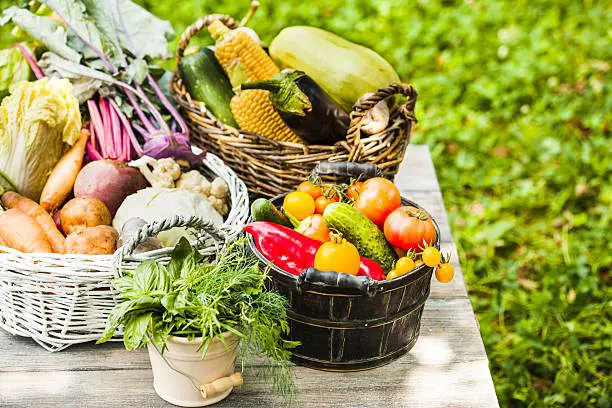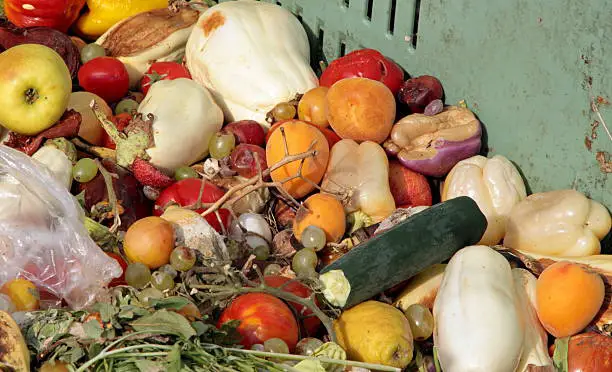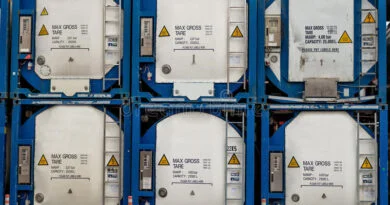Food Waste Complete Management Guide
Food waste refers to the intentional or unintentional disposal of edible food that could have been consumed. It can occur at any stage of the food supply chain, from production and harvesting to processing, packaging, transportation, retail, and consumer level.
There are several reasons why food waste occurs. One major reason is overproduction or over-purchasing of food, which can lead to surplus food that is ultimately thrown away. Inadequate storage and transportation facilities, as well as poor planning and management practices, can also result in food waste.
Food waste has significant environmental, social, and economic impacts. When food is wasted, the resources used to produce it, such as water, land, energy, and labor, are also wasted. This leads to increased greenhouse gas emissions, water usage, and deforestation, which contribute to climate change and other environmental problems.
In addition to the environmental impacts, food waste also has social consequences. According to the qqqqq1qFood and Agriculture Organization (FAO), about 690 million people worldwide suffer from hunger, and reducing food waste can help address this problem by increasing food availability.
Aaà waste also has economic impacts, as it represents a significant loss of value along the food supply chain. Food waste leads to higher costs for food producers and retailers, and ultimately results in higher prices for consumers.
Ways To Manage Food Waste Properly

To address the issue of food waste, various initiatives and strategies have been developed, such as food recovery and redistribution, composting, and reducing food waste at the source through better planning, storage, and consumption practices. Reducing food waste is an important step towards sustainable living. Here are some ways to manage food waste properly:
(1) Plan meals and shop smart
Plan your meals ahead of time and make a shopping list. Only buy what you need and avoid impulse purchases. This can help you reduce the amount of food that goes unused. Planning meals and shopping smart can help you save time, money, and ensure that you have healthy and delicious meals to enjoy. Here are some tips to help you plan your meals and shop smart:
Make a meal plan: Plan your meals for the week ahead of time. This will help you save time and ensure that you have all the ingredients you need.
Check your pantry: Before you start shopping, check your pantry, fridge, and freezer to see what ingredients you already have on hand. This will help you avoid buying duplicates and wasting food.
Make a shopping list: Based on your meal plan and pantry check, make a shopping list of the ingredients you need. Stick to your list to avoid impulse buys.
Shop in season: Buying produce that is in season is usually cheaper and fresher than buying out-of-season produce. Plus, it supports local farmers and reduces the carbon footprint of transportation.
Look for sales: Keep an eye out for sales and deals on the ingredients you need. But be careful not to buy items just because they are on sale if you don’t actually need them.
Buy in bulk: Buying items in bulk can be cheaper than buying smaller packages, especially for staples like rice, beans, and nuts.
Use coupons and loyalty cards: Take advantage of coupons and loyalty cards to save money on your grocery bills.
Consider store brands: Store-brand items are often cheaper than name-brand items and can be just as good in quality.
By following these tips, you can plan your meals and shop smart to save time, money, and enjoy delicious and healthy meals.
Read Also: Ways To Generate Income From Domestic Waste
(2) Store food properly
Store food in airtight containers, and keep them in the refrigerator or freezer to prolong their shelf life. Make sure to label containers with dates, so you know when to use them by. Properly storing food is important for preserving its freshness and preventing spoilage or contamination. Here are some general guidelines for storing different types of food:
Raw meat, poultry, and seafood: Store these items in the coldest part of your refrigerator or freezer. If possible, keep them separate from other foods to prevent cross-contamination. Make sure to cook these foods to the appropriate temperature to kill any bacteria.
Dairy products: Store milk, cheese, and yogurt in the refrigerator. Keep the temperature at or below 40°F (4°C). If you have leftover cheese, wrap it tightly in plastic wrap to keep it fresh.
Fresh fruits and vegetables: Most fresh produce can be stored in the refrigerator. However, some fruits and vegetables, such as bananas and tomatoes, should be stored at room temperature to prevent them from becoming mealy or mushy.
Canned foods: Canned foods can be stored at room temperature in a cool, dry place. Be sure to check the expiration dates and discard any cans that are bulging or leaking.
Dry goods: Store dry goods, such as flour, pasta, and rice, in a cool, dry place. Keep them in airtight containers to prevent pests and moisture from getting in.
Leftovers: Store leftovers in the refrigerator or freezer within two hours of cooking. Label them with the date so you know how long they’ve been in there. Remember to always wash your hands and kitchen surfaces before and after handling food, and to follow safe food handling practices to prevent foodborne illness.
(3) Use up leftovers
Don’t let leftovers go to waste. Use them in new recipes, or freeze them for later use. You can also take them to work for lunch or pack them in your child’s lunchbox. Food waste is a significant problem in many countries, and finding ways to reduce it is essential for both the environment and our wallets. One of the best ways to reduce food waste is to use up leftovers. Here are some ideas for using up leftovers from food waste:
Soup or stew: Leftover vegetables, meats, and grains can be combined with broth or water to make a delicious soup or stew. Use a slow cooker to cook the ingredients together for a few hours, and you’ll have a hearty meal.
Fried rice: Leftover rice can be turned into a flavorful dish by adding in vegetables, meats, and eggs. Cook the rice in a pan with a little oil, then add in the other ingredients and stir-fry until everything is heated through.
Stir-fry: Leftover vegetables and meats can be quickly cooked up in a stir-fry with some soy sauce, garlic, and ginger. Serve over rice or noodles.
Casserole: Combine leftover meats, vegetables, and grains with a sauce or cream of mushroom soup, and bake in the oven until heated through.
Smoothie: Leftover fruits and vegetables can be blended together with yogurt or milk to make a healthy smoothie. Add in some protein powder or nut butter for an extra boost.
Pizza: Use leftover meats and vegetables as pizza toppings on a homemade pizza. Use a premade crust or make your own using leftover bread dough.
Omelet: Combine leftover vegetables and meats with eggs and cheese to make a tasty omelet. Serve with toast or a side salad.
These are just a few ideas for using up leftovers and reducing food waste. With a little creativity, you can turn almost any leftover into a delicious meal. By reducing food waste, we can save money and help the environment at the same time.
(4) Compost
Composting is a great way to reduce food waste and create nutrient-rich soil. You can compost fruit and vegetable scraps, eggshells, and coffee grounds. Composting food waste is a great way to reduce your environmental impact and create nutrient-rich soil for your garden or plants.
Composting involves allowing food scraps and other organic materials to break down naturally, creating a nutrient-rich soil amendment that can be used to enrich garden soil and fertilize plants. o compost food waste, you will need a compost bin or pile, which can be purchased or made at home using materials such as wood pallets, wire mesh, or plastic bins. Once you have your bin or pile, follow these steps:
Collect food waste: Collect food scraps such as fruit and vegetable peels, coffee grounds, tea bags, eggshells, and nutshells in a container. Avoid adding meat, dairy, or oily foods as they can attract pests.
Add brown materials: Add carbon-rich materials such as dry leaves, straw, sawdust, or shredded newspaper to your compost bin or pile. The ideal ratio is 2 parts brown materials to 1 part food scraps.
Mix and moisten: Mix the brown materials and food scraps in your bin or pile and add water as needed to keep the compost moist but not soggy.
Turn the compost: Turn the compost every few days to aerate it and speed up the decomposition process. You can use a pitchfork, shovel, or compost turner to mix the materials.
Wait for compost: After a few weeks to several months, depending on the temperature and moisture levels, your compost should be ready. It will be dark, crumbly, and have a rich earthy smell.
Use the compost: Use the compost to enrich your garden soil, fertilize plants, or as a natural mulch. By composting food waste, you can reduce greenhouse gas emissions, save landfill space, and create a valuable resource for your garden.
Read Also: Ways To Generate Income From Electronic Waste (E-Waste)
(5) Donate food
Donate food to food banks or charities that serve the hungry. Many organizations accept non-perishable items, canned goods, and other shelf-stable items. Donating food is a great way to help those in need and support your local community. Here are some steps you can take to donate food:
Find a local food bank or food pantry: Search for local organizations in your area that accept food donations. You can also check with your city or county government, or reach out to national organizations like Feeding America to find local partners.
Check the donation guidelines: Once you’ve identified a food bank or pantry, check their donation guidelines to see what types of food they accept, and any specific packaging or labeling requirements.
Choose non-perishable items: When donating food, choose non-perishable items such as canned goods, pasta, rice, cereal, and other dry goods. These items have a longer shelf life and are easier to store.
Check expiration dates: Make sure that the items you donate have not expired and are still within their use-by date. Expired food can be harmful and is often unusable.
Package and transport the food: Once you’ve collected your donations, package them in sturdy bags or boxes and transport them to the donation location.
Remember, even small donations can make a big impact in the lives of those who are struggling with food insecurity. Thank you for considering donating food to those in need.
(6) Learn to preserve food
You can preserve food by canning, pickling, or drying. This can help you extend the shelf life of perishable items like fruits and vegetables. Preserving food is an essential skill that has been used for centuries to help people store food for longer periods of time. Here are some of the most common methods of preserving food:
Canning: Canning is a process of preserving food in which food is packed into jars and then heated to high temperatures to kill bacteria and other microorganisms. The jars are then sealed and can be stored for long periods of time. This method is commonly used for preserving fruits, vegetables, and meats.
Freezing: Freezing is a simple and effective way to preserve food. Most fruits and vegetables can be frozen and stored for several months. When freezing food, it’s important to ensure that the food is properly wrapped or stored in airtight containers to prevent freezer burn.
Drying: Drying is a process of removing moisture from food to prevent the growth of bacteria and mold. Some foods that are commonly dried include fruits, vegetables, and herbs. There are several ways to dry food, including air drying, sun drying, and using a dehydrator.
Smoking: Smoking is a method of preserving food that has been used for thousands of years. It involves exposing food to smoke from burning wood or other materials, which helps to preserve the food and give it a unique flavor. Foods that are commonly smoked include fish, meat, and cheese.
Pickling is a method of preserving food in which food is submerged in a solution of vinegar, water, and salt or sugar. This method is commonly used for preserving cucumbers, beets, and other vegetables. Pickling can also be used for preserving meat and fish.
By learning to preserve food, you can reduce food waste, save money, and ensure that you have a supply of food that can be used during times when fresh food may not be available. By managing food waste properly, you can save money, reduce your environmental impact, and help feed those in need.
Read Also: 30 Awesome DIY Projects that You’ve Never Heard of



